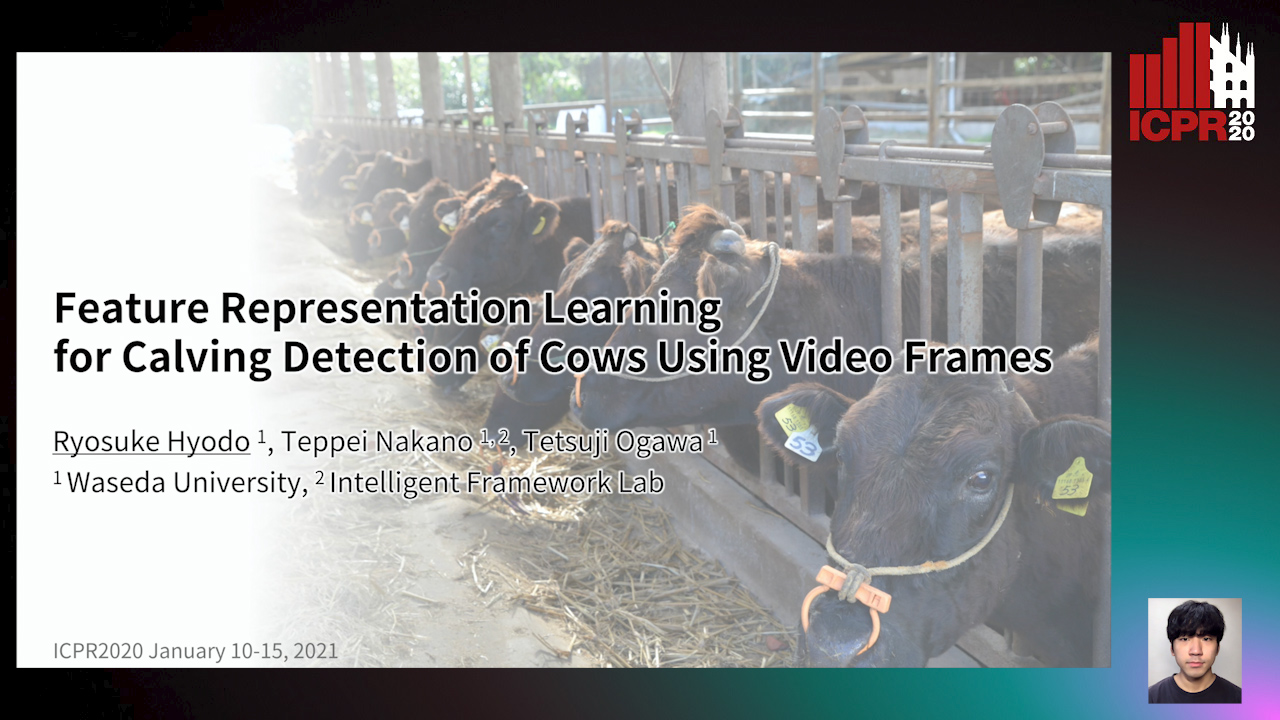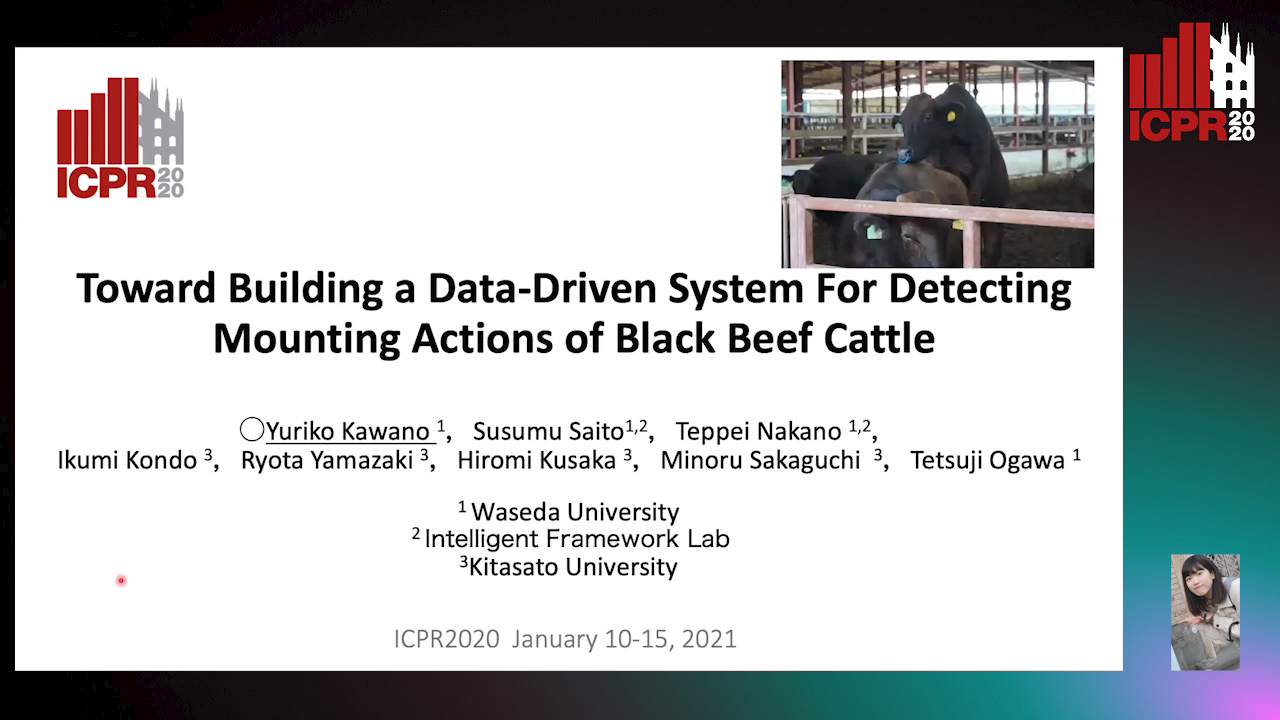Nakano Teppei
Papers from this author
Crowdsourced Verification for Operating Calving Surveillance Systems at an Early Stage
Yusuke Okimoto, Soshi Kawata, Susumu Saito, Nakano Teppei, Tetsuji Ogawa

Auto-TLDR; Crowdsourcing for Data-Driven Video Surveillance
Feature Representation Learning for Calving Detection of Cows Using Video Frames
Ryosuke Hyodo, Nakano Teppei, Tetsuji Ogawa

Auto-TLDR; Data-driven Feature Extraction for Calving Sign Detection Using Surveillance Video
Abstract Slides Poster Similar
Toward Building a Data-Driven System ForDetecting Mounting Actions of Black Beef Cattle
Yuriko Kawano, Susumu Saito, Nakano Teppei, Ikumi Kondo, Ryota Yamazaki, Hiromi Kusaka, Minoru Sakaguchi, Tetsuji Ogawa

Auto-TLDR; Cattle Mounting Action Detection Using Crowdsourcing and Pattern Recognition